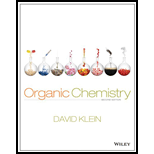
(a)
Interpretation:
Formation of product should be identified when the β-D-allopyranose is treated with excess CH3I in Ag2O, acetic anhydride in pyridine and methanol in HCl.
Concept introduction:
Methylation: carbohydrates methylated by using methyl iodide and silver oxide.
Acetylation: carbohydrates acetylated by using acetic anhydride in pyridine.
Glycoside formation: carbohydrates react with an alcohol in acid which produce both anomers acetals are formed, if alkoxy group points down then it is α, alkoxy group points up then it is β.
(b)
Interpretation:
Formation of product should be identified when the β-D-allopyranose is treated with excess CH3I in Ag2O, acetic anhydride in pyridine and methanol in HCl.
Concept introduction:
Williamson Ether Synthesis: Alcohols reacts with alkyl halide forms ether is called Williamson ether synthesis.
Methylation: carbohydrates methylated by using methyl iodide and silver oxide.
Acetylation: carbohydrates acetylated by using acetic anhydride in pyridine.
Glycoside formation: carbohydrates react with an alcohol in acid which produce both anomers acetals are formed, if alkoxy group points down then it is α, alkoxy group points up then it is β.
To find: Formation of product when the β-D-allopyranose is treated with acetic anhydride in pyridine.
(c)
Interpretation:
Formation of product should be identified when the β-D-allopyranose is treated with excess CH3I in Ag2O, acetic anhydride in pyridine and methanol in HCl.
Concept introduction:
Williamson Ether Synthesis: Alcohols reacts with alkyl halide forms ether is called Williamson ether synthesis.
Methylation: carbohydrates methylated by using methyl iodide and silver oxide.
Acetylation: carbohydrates acetylated by using acetic anhydride in pyridine.
Glycoside formation: carbohydrates react with an alcohol in acid which produce both anomers acetals are formed, if alkoxy group points down then it is α, alkoxy group points up then it is β.
To find: Formation of product when the β-D-allopyranose is treated with methanol in HCl
Want to see the full answer?
Check out a sample textbook solution
Chapter 24 Solutions
Organic Chemistry
 ChemistryChemistryISBN:9781305957404Author:Steven S. Zumdahl, Susan A. Zumdahl, Donald J. DeCostePublisher:Cengage Learning
ChemistryChemistryISBN:9781305957404Author:Steven S. Zumdahl, Susan A. Zumdahl, Donald J. DeCostePublisher:Cengage Learning ChemistryChemistryISBN:9781259911156Author:Raymond Chang Dr., Jason Overby ProfessorPublisher:McGraw-Hill Education
ChemistryChemistryISBN:9781259911156Author:Raymond Chang Dr., Jason Overby ProfessorPublisher:McGraw-Hill Education Principles of Instrumental AnalysisChemistryISBN:9781305577213Author:Douglas A. Skoog, F. James Holler, Stanley R. CrouchPublisher:Cengage Learning
Principles of Instrumental AnalysisChemistryISBN:9781305577213Author:Douglas A. Skoog, F. James Holler, Stanley R. CrouchPublisher:Cengage Learning Organic ChemistryChemistryISBN:9780078021558Author:Janice Gorzynski Smith Dr.Publisher:McGraw-Hill Education
Organic ChemistryChemistryISBN:9780078021558Author:Janice Gorzynski Smith Dr.Publisher:McGraw-Hill Education Chemistry: Principles and ReactionsChemistryISBN:9781305079373Author:William L. Masterton, Cecile N. HurleyPublisher:Cengage Learning
Chemistry: Principles and ReactionsChemistryISBN:9781305079373Author:William L. Masterton, Cecile N. HurleyPublisher:Cengage Learning Elementary Principles of Chemical Processes, Bind...ChemistryISBN:9781118431221Author:Richard M. Felder, Ronald W. Rousseau, Lisa G. BullardPublisher:WILEY
Elementary Principles of Chemical Processes, Bind...ChemistryISBN:9781118431221Author:Richard M. Felder, Ronald W. Rousseau, Lisa G. BullardPublisher:WILEY





